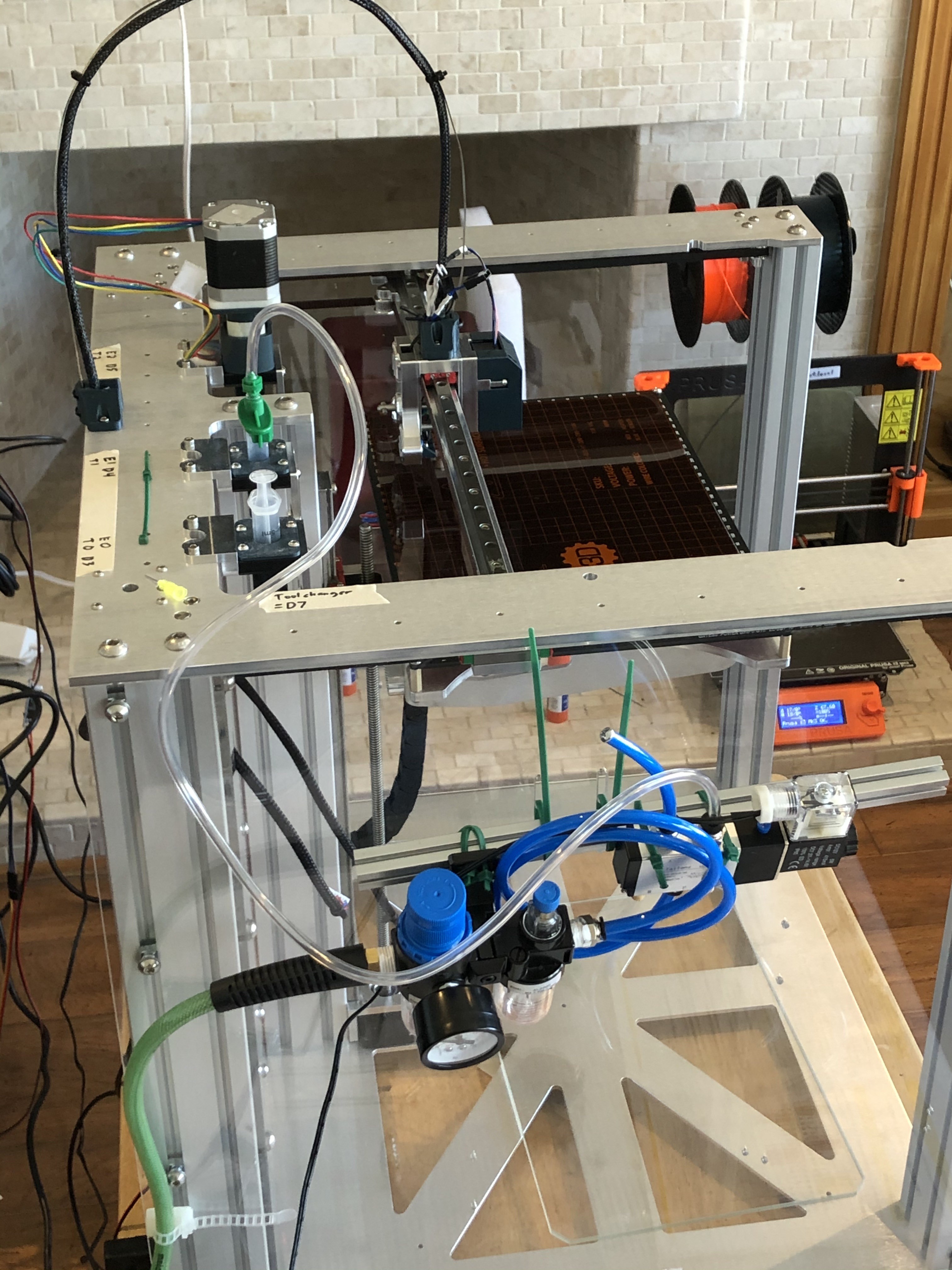I'm slowly but surely working my way up to silver ink printing. I was able to print another set of lines using time-pressure dispensing. This method involves using pressure from an air pump to dispense the conductive material. The main drawback of time-pressure dispensing is the associated tools - it requires an air pump. The current design I would prefer to use is the stepper extrusion method which uses a stepper-driven plunger to extrude the ink. This method requires a way to retract the plunger to a specific point after printing is finished however, which I have yet to work out. Stall detection perhaps?

Discussions
Become a Hackaday.io Member
Create an account to leave a comment. Already have an account? Log In.
Hadn't seen Trinamic's stuff, looks worth taking a look at. I do know the Duet I'm using is capable of stall detection, but the documentation for the Duet is a bit dense so i'll see how easy this is to implement in practice.
I suppose I could set the extruder to absolute units, might be a better solution. Right now it extrudes to build up pressure, then retracts a certain amount after the line is done. That works well, but retracting the plunger after a syringe is all used up means pulling the plunger back to zero, which is doable manually but not how I want it to work long term.
Are you sure? yes | no
I think stall detection might work - that's how Prusa's latest printers home.
Using Trinamic stepper motor drivers you can configure them to output a signal when the motor stalls, and then also set the drive current lower so that the motor stalls with little torque. It's perfect for a homing system like this :D
However, how would you then remember where you "left the plunger"?
The way I see it, if you retract the plunger it needs to move back to the starting position for the next print. I would just leave it in that starting position or a known position relative to the ink level of the cartridge... But maybe I am misunderstanding the purpose of this system.
Love the PiCam too, by the way!
Are you sure? yes | no